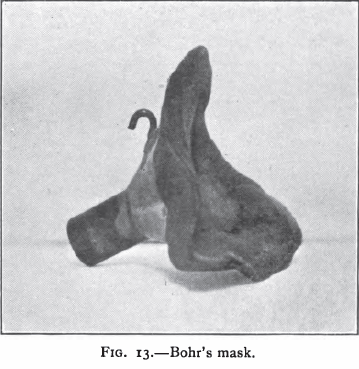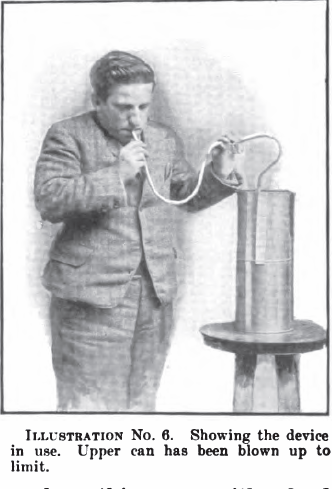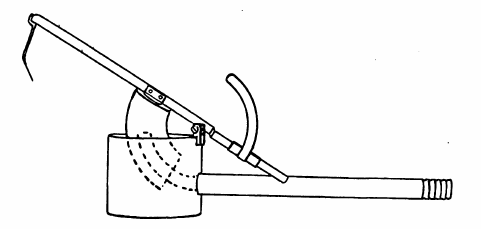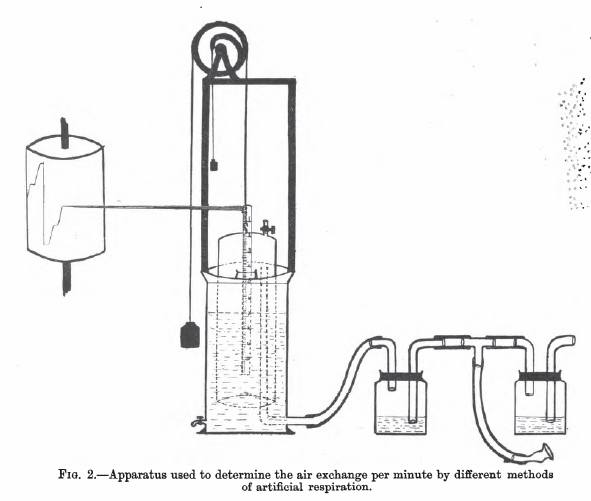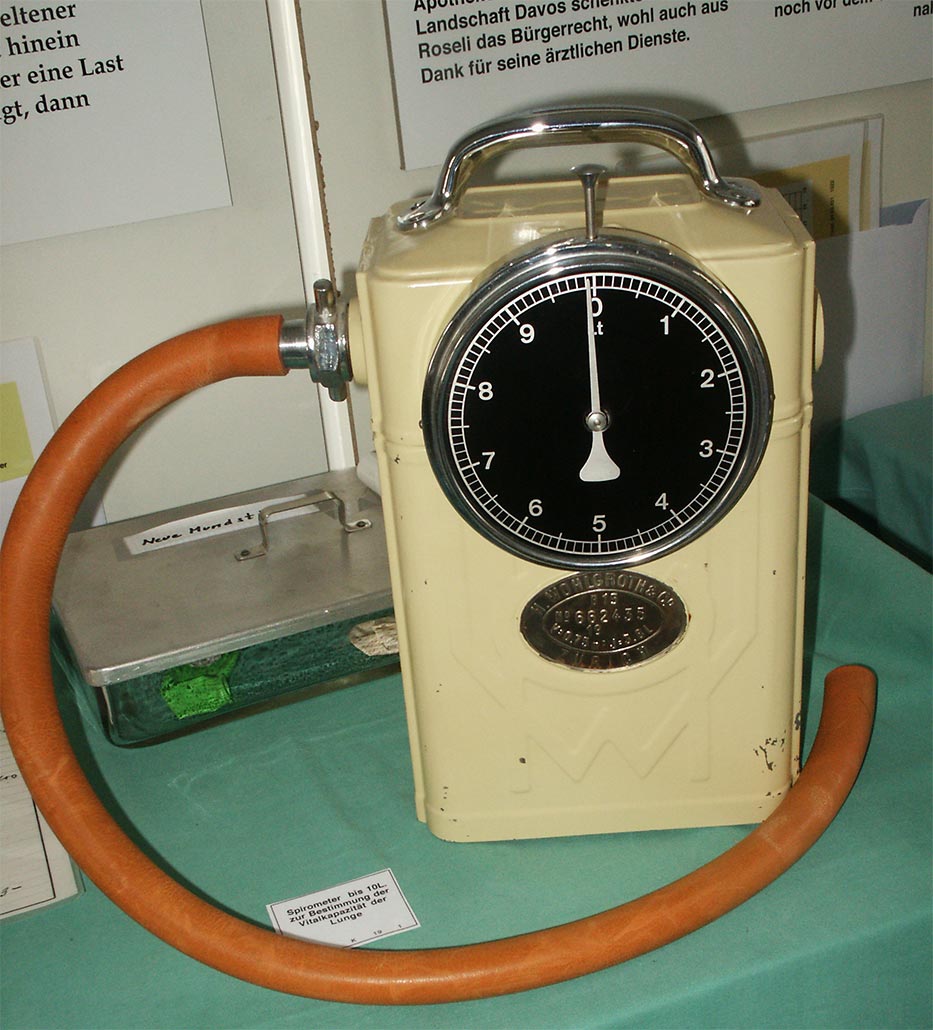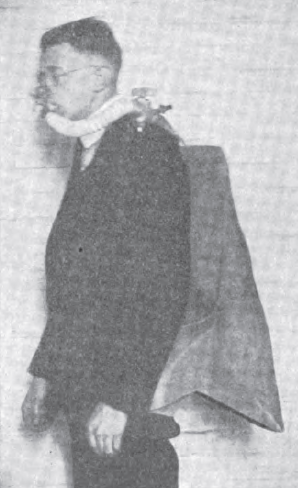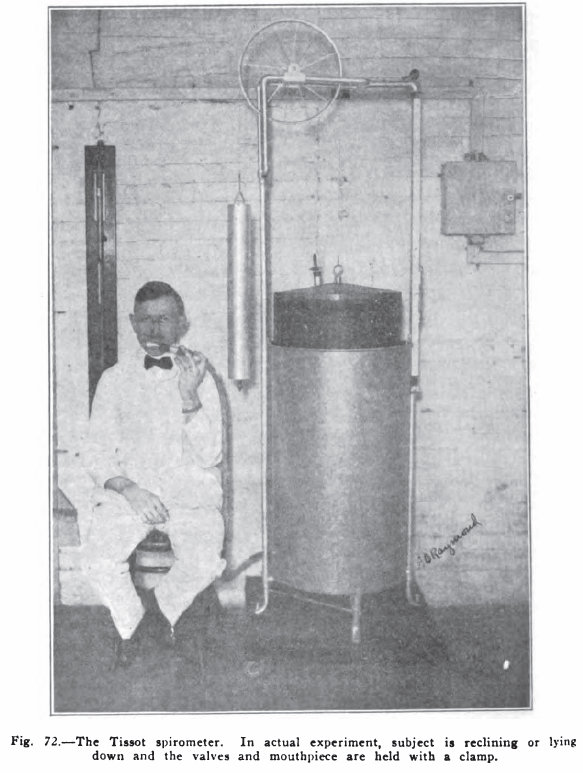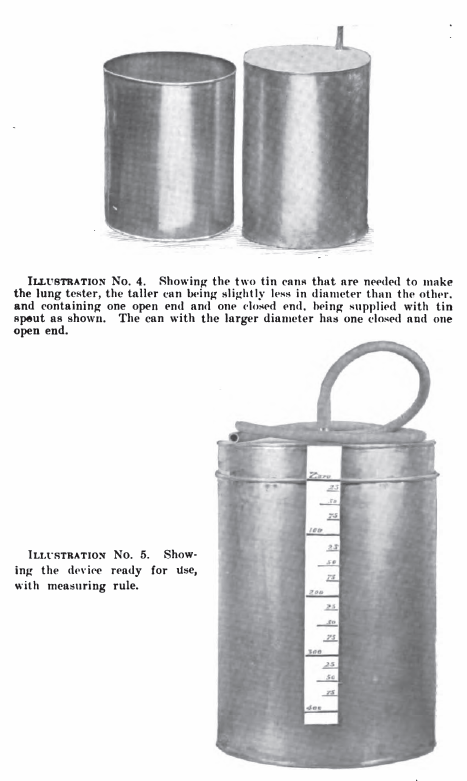
From: Building of Vital Power: Deep Breathing and a Complete System for Strengthening the Heart, Lungs, Stomach and All the Great Vital Organs by By Bernarr Macfadden, 1904, page 152.
“In order to secure a perfect spirometer , all you need is to invent some method that will enable to you to measure the quantity of air you expel. In making the second device here illustrated, provide yourself with two large tin cans that will hold from a gallon and a half to two gallons. One should be less in diameter than the other, and the narrow can should fit snugly within the other. The narrow can should be open at one end and closed at the other. At the closed end should be a little opening with a thin spout, as shown in illustration No. 4. These cans or buckets can be bought at a hardware store but any tinsmith will make them for a very small sum of money.
“If your lung capacity is large, the cans should be made to hold a gallon and a half to two gallons. If small, cans of a gallon or more will be sufficiently large.
“Illustration No. 4 shows the two cans necessary to make the apparatus. The can on the right is of the lesser diameter and shows the small spout attached. To complete your device, purchase two or three feet of small rubber tubing that will fit tightly over the spout. Now fill the can of the larger diameter about three-quarters full of water. Place the can with the spout to which the rubber tubing is attached, inside the larger can. You will then have a device such as appears in Illustration No. 5, which shows the lung tester ready for use, with a rubber tube coiled on top of the can. You will notice, however, that this lung tester in Illustration No. 5 is provided with a measuring rule. If you have no method of measuring such as is described in the foregoing, you can provide your spirometer with a measuring device in the following manner:
“Procure some surgeon’s adhesive tape, or some thickly woven white cloth on which you can use a pen. Now paste this cloth or tape around a narrow piece of cardboard of nearly the length of the taller can, such as is shown here in illustration No. 5. This cloth should be slightly longer than the smaller piece of cardboard around which it is pasted. The free end of this cloth should be fastened with glue, or in some other way tightly secured to the top of the can with the spout, as is shown in the illustration. You are thus provide with a measuring rule which will rise and fall with the can attached to the tube, as the air is blown in or escapes from the can.”
